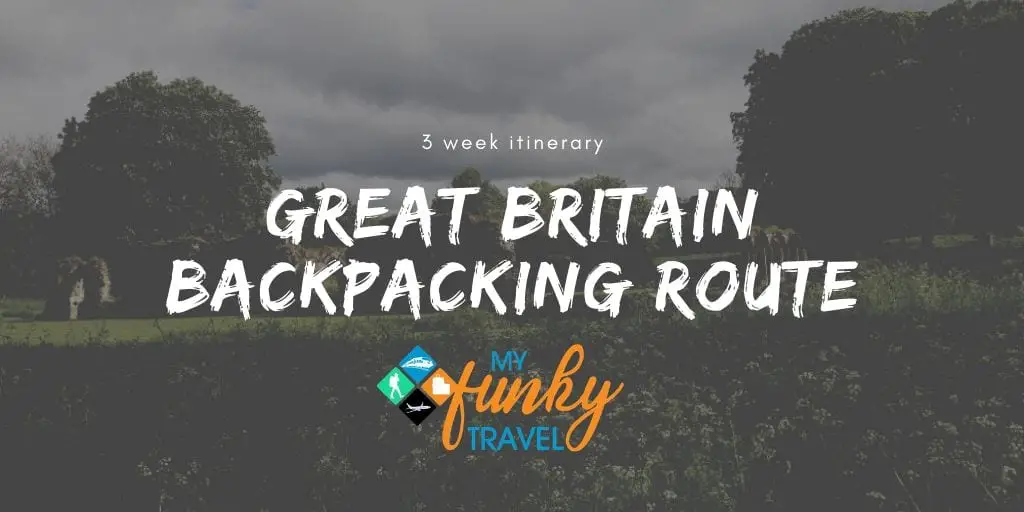While there was a time when Great Britain controlled a huge portion of the world’s territory, it is only really a very small island in Northern Europe. Despite its limited size, there is so much history and culture to be discovered that lovers of all things British will want to stay for several weeks to really get a proper understanding and feel for this country’s many different faces. Read on for our UK backpacking tips and first a three week itinerary for a trip around the island or staycation if you are British.
Note that this route covers England, Scotland and Wales. Northern Ireland, which is part of the UK but not Great Britain, will be covered in a separate itinerary for the whole island of Ireland.
Table of Contents
- Backpacking UK – A 3 Week Itinerary
- Backpacking England & Wales
- Backpacking Scotland
- UK Backpacking Tips
Great Britain Itinerary Overview
How long does it take to backpack Britain?
While it only takes a little over four hours to get from London to Edinburgh by the fastest rail links, there are so many worthwhile stops in between and around the country, that we suggest allowing three weeks for the Britain backpacking route outlined below. That’s still missing out many destinations so you could easily allow more time and find more places to go.
UK Backpacking Budget
Possible Shoestring Budget for this Itinerary: £1000 €1100 $1200
£1000 might be a sensible shoestring budget to have for travelling around Britain in three weeks but that will require you to be quite smart with how and where you spend your money. If you’re not willing to stay in dorms or are planning many nights out or simply want to visit multiple attractions every day, then you could easily double that.
These figures don’t include the cost of flights in and out, travel insurance or any possible visa costs. It’s purely based on what you will spend in the country and is based on March 2020 prices and exchange rates.
Read our article on the cost of travel in the UK for more info and sample prices.
Backpacker Jobs in Britain
Use Worldpackers to search for work placements in Britain (options include hostel, farm and even festival work). As well as the experience, it’s a nice way to save money and extend your trip as at the very least you should get free accommodation and free meals which equates to huge savings in the UK. Read our Worldpackers guide for backpackers to learn more.
Travel Insurance for backpacking Britain
The cost of travel insurance isn’t included in the budget figures above. You can get a quote in less than a minute from Heymondo who provide well reviewed international travel insurance for backpackers from all over the world.
Backpacking UK – A 3 Week Itinerary
Our 3 week itinerary for travelling around Britain features cities in England, Wales and Scotland. Starting in London, the UK’s capital and largest city, it immediately dives south to hit the coast in Brighton. From there it heads east taking in a number of Britain’s most historic sites, towns and cities before making a dart north towards the Scottish border via Liverpool and the Lake District. Briefly leaving the British mainland to visit the Isle of Arran, the route concludes with stops in the two main cities in Scotland – Glasgow and Edinburgh.
Backpacking England & Wales
London
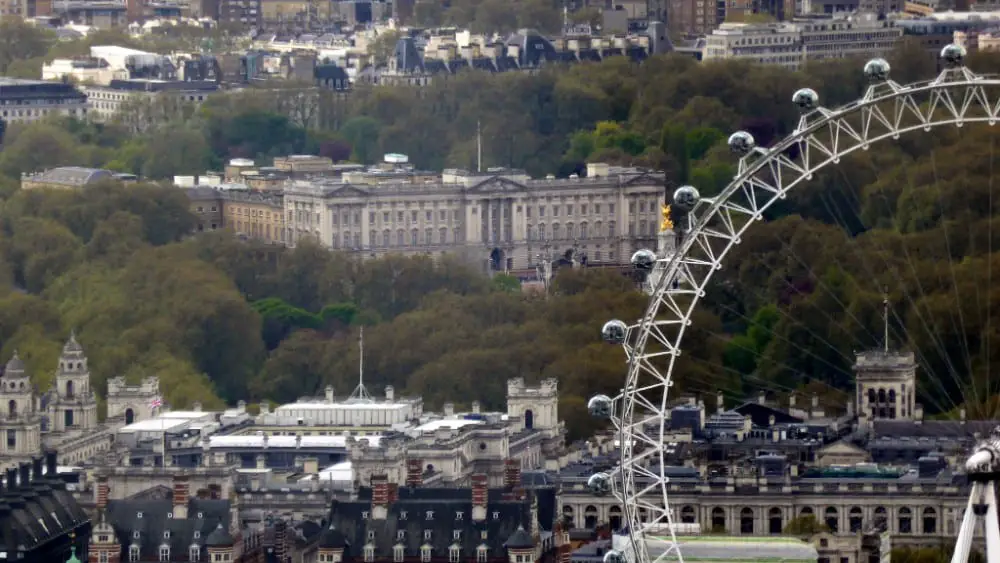
London Eye & Buckingham Palace, CC BY 2.0
Many visitors to Britain visit London and only London. While there is so much more to the country, the British capital is the obvious starting point and it is home to most of the busiest airports in the UK making it a convenient entry point. As well as world famous tourist attractions such as Buckingham Palace, Big Ben, Hyde Park and Tower Bridge, the city is home to an array of many varied districts.
Edgy, alternative Camden is one part of town not to be missed with Camden Market home to hundreds of quirky stalls selling a variety of music, fashion and art, as well as great street food. The East End and particularly the area around Brick Lane is another popular stop with visitors to London and it really shows off the cultural diversity that exists in this extremely international city which is home to communities from all four corners of the world.
It should though be pointed out that London is by some distance the most expensive part of the UK and while it may be tempting to stay for up to a week here, budget travellers would be wise to try and cram as much as possible into a few days although there are at least some affordable hostel dorm options these days.
Brighton
Easily accessible from London with regular rail connections, the seaside city of Brighton is another of Britain’s most popular backpacking destinations. It has a different vibe to most UK cities which can feel a bit ‘samey’ after a while with the same shops and chain bars and restaurants in most of them. The sea air, stony beach and old pier helps to give Brighton a special aura, as does its liberal attitude and reputation as Britain’s gay capital.
Salisbury & Stonehenge
The journey from Brighton to Bath is one of the longest on this UK travel itinerary but Stonehenge makes for a nice stop on the way. You’ll only need an hour or so here, so there’s no need to stay overnight in the area.
While Stonehenge has been somewhat unfairly dubbed as ‘just a pile of rocks’ by some, it’s incredible to think that this UNESCO Heritage Site was created by humans some 5000 years ago. Trying to unravel the mystery of what it all means and why it was built is half the fun but budget-minded travellers may be put off by the hefty £21.10 entrance fees.
It’s also not that easy to get to by public transport with Salisbury the nearest city of any size. Consider taking a morning train or bus from Brighton to Salisbury (it may be quicker to go via London) and then leave your bag in storage in Salisbury while you head off to Stonehenge. Be sure to check out Salisbury’s huge 13th Century Anglican cathedral while you are there too.
Bath & Bristol
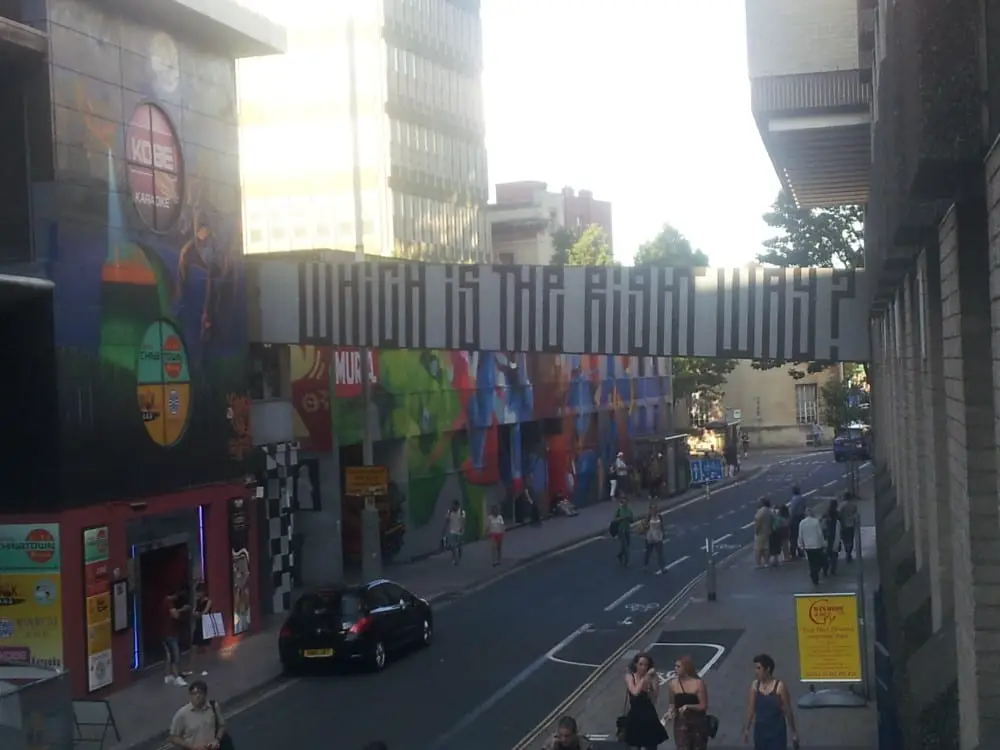
There are regular trains taking between just 10 and 15 minutes to get from Bristol to Bath and vice-versa, so choose one as your base and do a day-trip to the other.
Bath is one of Britain’s most historic and most charming cities, most famous for its Roman era baths from which the city takes its name. It’s the only place in Britain where you can bathe in hot natural waters and it’s also just a nice place to spend the day, particularly if the sun is shining on the River Avon which runs through the heart of the city.
Bristol by comparison, is a much more modern and vibrant city with a large student population. While there’s less in the way of historical sites, many travellers are drawn in to check out the murals and work of the world’s most famous street artist Banksy who is from the city. There is also more in the way of nightlife here which is worth considering when deciding on where to base yourself.
Cardiff
Cardiff, which features in our countdown of the cheapest cities to live in UK, could also be visited as a day-trip from Bath or Bristol, but you may wish to stay overnight to get a real feel for the Welsh capital. Like many of Britain’s industrial big cities, it has undergone a significant makeover in recent years with many green spaces to relax in while Cardiff Bay is now a thriving area full of bars, restaurants and cafes. History lovers will also be drawn to the city with no fewer than five castles in the city and surrounding area.
Oxford
Heading back into England, the city of Oxford is most well known for its famous university, which ranks as one of the best in the world. Founded in the 12th Century, many of Oxford’s old colleges now allow visitors to access its grounds and some of its buildings. The city is also home to several museums including Britain’s oldest – the 17th Century Ashmolean Museum. Punting along the river is also a popular pass-time for summer visitors.
Stratford
Next up is Stratford-upon-Avon, a medieval market town in the West Midlands, just over 20 miles south of Britain’s second city Birmingham. Stratford is a quieter place than most of the urban destinations on this route but it’s a worthy stop for one main reason – as the hometown of one of the world’s most famous playwrights – William Shakespeare. Virtually all the sites and attractions are related to this from Shakespeare’s childhood home to Ann Hathaway’s Cottage. You can even watch a performance at the Royal Shakespeare Theatre but this may need to be booked in advance at weekends and during peak times of the year.
Liverpool
Moving into northern England for the first time, the city of Liverpool is another popular stop with anyone on the UK backpacker trail. Located on the banks of the River Mersey, much of Liverpool’s appeal is thanks to the Beatles, probably the most influential band of the whole 20th Century. Head to The Beatles Story on the famous Albert Dock for the best overview of the band’s emergence and rise to fame. The city is also home to two of England’s most famous football clubs – Liverpool FC and Everton.
Lake District
Nature lovers will want to spend plenty of time here. England does have lots of charming countryside but you are rarely that far from a town or city. The Lake District in the far north west of the country does feel much more remote and peaceful though and is a nice escape from the busy cities.
Penrith and Kendal both lie on the main west coast rail line connecting England to Scotland and are good access points for the Lake District where you are free to explore what is England’s largest national park covering nearly a thousand square miles. The region is full of lakes, small peaks and tiny villages and you can explore it on foot or by bicycle, perhaps with a bit of help from the somewhat irregular buses that run through the area.
Hadrian’s Wall
Built in the 2nd Century, Hadrian’s Wall stretches from coast to coast close to but not quite on the border between England and Scotland. Built by Roman soldiers in the 2nd Century, it once formed the final northern frontier of the great Roman Empire. It makes for a decent little stop as you make your way north into Scotland but it’s not really worth staying overnight if you only have three weeks in the UK. Your best bet may be to take a train to Carlisle and visit the wall by bus from there before returning to Carlisle and continuing on the train north to Western Scotland.
Backpacking Scotland
Isle of Arran
The Isle of Arran is situated in the Firth of Clyde, just off the coast of mainland Scotland. Home to less than 5,000 people, this blustery isle is a good place for hiking through its hilly terrain or taking walks on its blustery beaches. The unique geology of the island will also be of interest to some visitors while Arran is home to a couple of castles and plenty of wildlife including seals and basking sharks which can frequently be seen in its waters.
Glasgow
Scotland’s largest city is Glasgow and while it may lack the historical charms that other Scottish towns can boast, it has improved significantly in recent years with a host of new arts and cultural attractions close to the banks of the River Clyde. Glaswegians are passionate people but this is a complex place with conflicting British and Irish influences and this best manifests itself with the huge outpouring of emotion that comes with the city’s Old Firm derby as Scotland’s two largest football clubs (Glasgow Rangers and Glasgow Celtic) meet.
Edinburgh
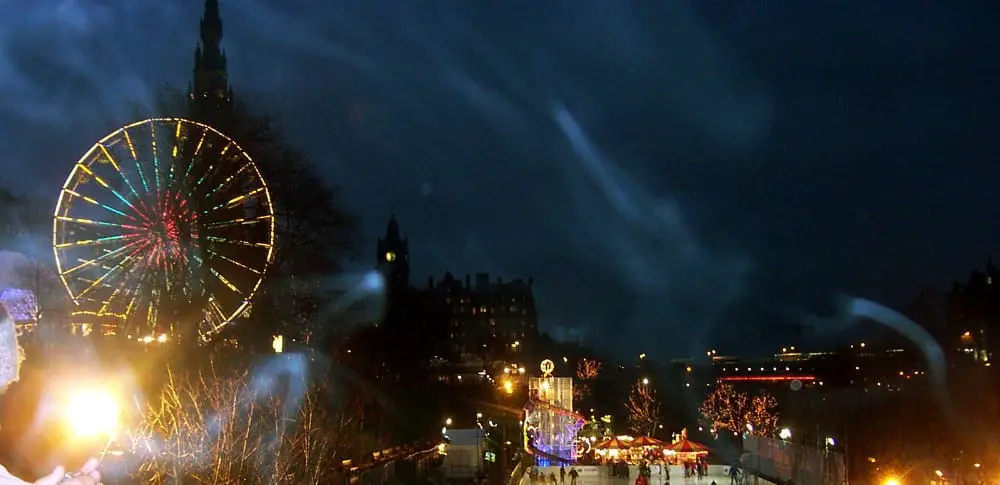
Hogmanay in Edinburgh, CC BY 2.0
Our three week UK backpacking route concludes in the Scottish capital Edinburgh. The city is home to the UK’s best New Year’s Eve celebrations, known as Hogmanay in Scotland. It also hosts the world’s largest arts festival each summer with Edinburgh Fringe spanning almost four weeks, usually in August and featuring some of the UK’s best comedians. This would be a great time to visit the city but it has plenty of other things to offer with a famous castle and the National Museum of Scotland both worth visiting.
Edinburgh Airport has good connections for onward flights to cities right across Europe.
All our europe routes
iberia | central europe | baltics | balkans | hungary-romania-bulgaria |scandinavia | south caucasus | greece | UK
UK Backpacking Tips
Visa Requirements for UK
At the time of writing (March 2020), the UK is in the transitional period of Brexit meaning it has technically left the European Union but it’s only really at the start of 2021 when we will start to see significant changes. The UK’s immigration policy is likely to change considerably in the coming years but currently all EU citizens can enter without a visa and there are an additional 56 nationalities who can enter the country (as a tourist) and stay for up to 6 months visa-free including people from Australia, New Zealand, USA, Canada, Israel, Japan and South Korea.
Most Asian and African nationals though will need to apply for a visa before visiting. Contact your local British Embassy for more info if you are in this position.
Extending your Trip & Getting off the beaten track
In England, city-lovers may also wish to check some of the other large regional cities out such as Birmingham, Manchester, Leeds and Newcastle. These places offer a more authentic look at life in modern Britain than some of the more touristy destinations such as London and Oxford. If you’re looking for more historic towns then consider going to Cambridge (home of the other major university) and York.
However from a traveller’s perspective, the big cities are probably not the most interesting thing about Britain and if you’re not a city lover anyway, you could easily skip the likes of Bristol, Cardiff, Liverpool and Glasgow in favour of more time in the countryside and some of the country’s national parks.
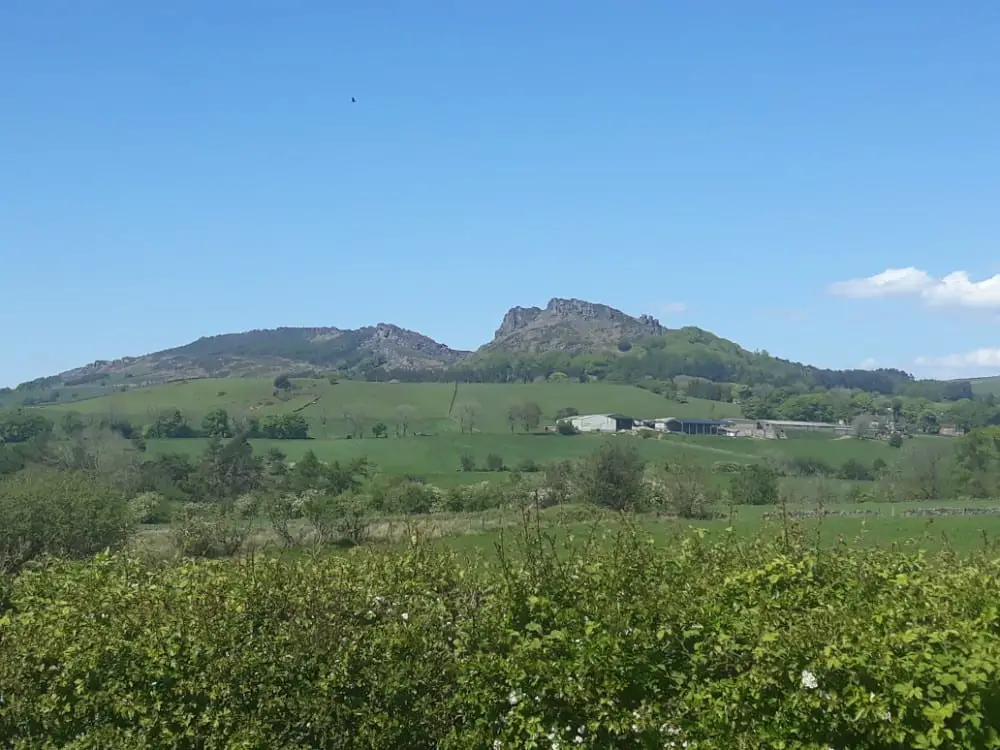
Highlights in England include the Peak District, the Cotswolds (pictured above) and Cornwall in the far southwest which tends to get the best weather in the country, although that’s not saying much. Surfers will want to head to Newquay on the Cornish coast.
We’ve only included one destination in Wales but it has some of the most charming countryside in Britain and you will feel as though you’ve stepped back in time if you move into rural Central or Northern Wales. Highlights include Snowdonia which includes many lakes and Mount Snowdon, the largest peak in England and Wales. If you are more pushed for time, visiting the scenic Gower Peninsula close to Swansea, would be a more logical extension to this route.
Scotland is also largely very rural and if you have an extra week, you can easily travel further north and explore the Scottish Highlands and lakes such as Loch Lomond and the famous Loch Ness. The Cairngorms is the UK’s largest National Park while Scotland is also home to Britain’s highest peak – Ben Nevis. If walking in the countryside and being amongst nature is more your thing, you may even want to base your trip around Scotland before ending with a dive down into England to take in two or three of the towns featured above.
Shortening the Route – 1 & 2 Week Backpacking Itineraries for Great Britain
If you only have one week then you do still have plenty of options given the country is so small and travel is relatively quick. You could still base it around travelling from London to Edinburgh but with only a couple of stops in between – Oxford and the Lake District may be good choices.
In two weeks, you could follow the route above but perhaps skip the section between Brighton and Cardiff and instead travel from London to Oxford and then follow the route north.
Cheapest Way to travel around England and Scotland
The UK has an excellent transport network and even in rural areas, there are plenty of bus routes although they aren’t always that regular. If you know what you’re doing, you can find some great deals on transport and breaking your trip up into lots of smaller journeys is actually quite a cost-effective way to go about exploring the UK.
Getting around by train is the quickest and generally most comfortable way to see Britain. Rail passes are available but you may find it works out cheaper to just buy individual tickets. Short and regional services such as Bath to Bristol for example can just be bought at the station at the time of travel. However longer journeys are best bought at least a week in advance when you can often get huge discounts on the normal fare. Even if you are more of a ‘go with the flow’ type traveller, this is well worth considering if your budget is tight. Check out The Trainline for timetables and buying tickets on all UK trains. Tickets can be downloaded to your mobile or collected at the station using the reference code provided when you book.
Most routes are also served by buses and coaches which are often – but not always – a bit cheaper. National Express has the most extensive network while you can sometimes get bargain fares on intercity travel with Megabus.
When to visit Great Britain
Britain is not blessed with great weather and while it rarely gets below freezing in the winter, short days and cloudy skies can make it quite a depressing place to be during the winter months. The best time to visit is between June and August when there are festivals on virtually every weekend including some of the world’s best music festivals which would make a nice but expensive addition to your trip.
The UK school holidays start in the final two weeks of July and continue through all of August so arriving just before that is perhaps the optimum time to visit Britain to get the best of the weather and enjoy the long nights, but also avoid the absolute peak time when attractions fill up and accommodation and transport prices can rise in the most popular areas.
This UK backpacking itinerary was published in March 2020.
Please use the comments section below for questions.

